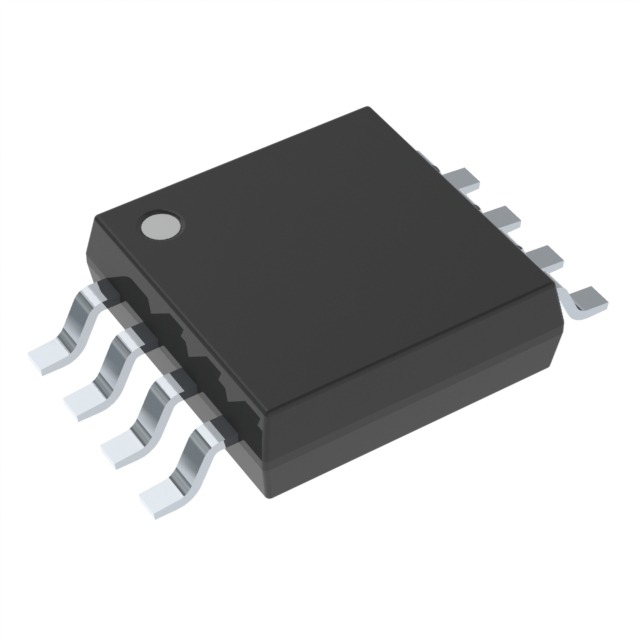MAX6126B28+ - English Editing Encyclopedia Entry
Product Overview
Category
The MAX6126B28+ belongs to the category of voltage references.
Use
It is primarily used as a precision voltage reference in various electronic applications.
Characteristics
- High accuracy and stability
- Low temperature coefficient
- Low output noise
- Wide operating temperature range
Package
The MAX6126B28+ is available in a small SOT23 package, which is suitable for space-constrained designs.
Essence
This voltage reference offers exceptional precision and stability, making it ideal for applications that require accurate voltage references.
Packaging/Quantity
The MAX6126B28+ is typically packaged in reels or tubes, with a quantity of 3000 units per reel/tube.
Specifications
- Output Voltage: 2.5V
- Initial Accuracy: ±0.02%
- Temperature Coefficient: 3ppm/°C (typical)
- Output Noise: 4µVp-p (0.1Hz to 10Hz)
- Operating Temperature Range: -40°C to +85°C
Detailed Pin Configuration
The MAX6126B28+ has three pins:
- VOUT: Output voltage pin.
- GND: Ground reference pin.
- VIN: Input voltage pin.
Functional Features
- High precision: The MAX6126B28+ provides excellent initial accuracy and low temperature coefficient, ensuring precise voltage references.
- Low noise: With low output noise, this voltage reference minimizes interference in sensitive applications.
- Wide temperature range: It operates reliably over a wide temperature range, making it suitable for various environments.
Advantages and Disadvantages
Advantages
- High accuracy and stability
- Low output noise
- Wide operating temperature range
- Small package size
Disadvantages
- Limited output voltage options
- Relatively higher cost compared to standard voltage references
Working Principles
The MAX6126B28+ utilizes advanced bandgap reference technology to generate a stable and accurate output voltage. It compensates for temperature variations and provides a precise reference voltage for other circuitry.
Detailed Application Field Plans
The MAX6126B28+ finds applications in various fields, including:
- Precision measurement instruments
- Data acquisition systems
- Industrial control systems
- Medical devices
- Communication equipment
Detailed and Complete Alternative Models
- LT6657: Precision voltage reference with similar specifications.
- REF102: High-precision voltage reference suitable for demanding applications.
- ADR4520: Ultra-low noise voltage reference for sensitive analog circuits.
These alternative models offer comparable performance and can be considered as substitutes for the MAX6126B28+ in specific applications.
In conclusion, the MAX6126B28+ is a high-precision voltage reference that offers exceptional accuracy, stability, and low noise. Its small package size and wide operating temperature range make it suitable for various electronic applications. However, it has limited output voltage options and a relatively higher cost compared to standard voltage references. Nonetheless, its advantages outweigh the disadvantages, making it a reliable choice for precision voltage reference requirements.
기술 솔루션에 MAX6126B28+ 적용과 관련된 10가지 일반적인 질문과 답변을 나열하세요.
Sure! Here are 10 common questions and answers related to the application of MAX6126B28+ in technical solutions:
Q: What is the MAX6126B28+? A: The MAX6126B28+ is a precision voltage reference IC that provides a stable and accurate output voltage of 2.5V.
Q: What is the typical application of the MAX6126B28+? A: The MAX6126B28+ is commonly used as a reference voltage source in various technical solutions, such as analog-to-digital converters (ADCs), digital-to-analog converters (DACs), and sensor calibration circuits.
Q: What is the output voltage accuracy of the MAX6126B28+? A: The MAX6126B28+ has an initial accuracy of ±0.02% and a temperature coefficient of ±3ppm/°C, ensuring precise and stable voltage output.
Q: What is the input voltage range for the MAX6126B28+? A: The MAX6126B28+ requires an input voltage between 2.7V and 12.6V for proper operation.
Q: Can the MAX6126B28+ operate in low-power applications? A: Yes, the MAX6126B28+ has a low quiescent current of only 50µA, making it suitable for power-sensitive designs.
Q: Does the MAX6126B28+ require any external components for operation? A: No, the MAX6126B28+ is a standalone voltage reference and does not require any external components.
Q: Is the MAX6126B28+ available in different package options? A: Yes, the MAX6126B28+ is available in a small SOT23-3 package, which makes it suitable for space-constrained applications.
Q: Can the MAX6126B28+ withstand high temperatures? A: Yes, the MAX6126B28+ has a wide operating temperature range of -40°C to +125°C, allowing it to be used in harsh environments.
Q: Does the MAX6126B28+ have any built-in protection features? A: Yes, the MAX6126B28+ includes built-in reverse-battery protection and current-limiting circuitry to ensure safe operation.
Q: Are there any evaluation boards or reference designs available for the MAX6126B28+? A: Yes, Maxim Integrated provides evaluation kits and reference designs that can help users quickly integrate the MAX6126B28+ into their technical solutions.
Please note that these answers are general and may vary depending on specific application requirements.


